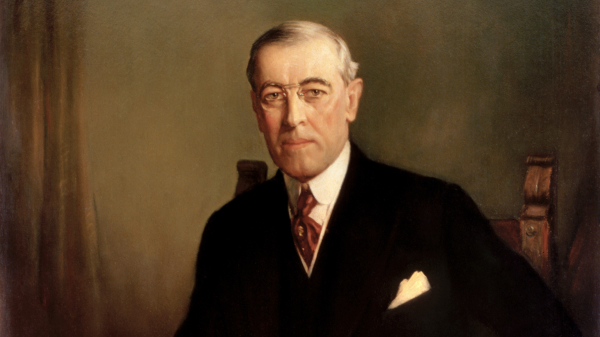The Ukraine-Russian war has become a long, grinding, and often confusing conflict—one that has reshaped how we think about warfare in the modern age. It’s no longer about massive tanks rolling through borders or dramatic air strikes dominating the skies. Instead, what we’re witnessing is a war marked by improvisation, innovation, and surprising resilience. Ukraine, the smaller country, lacking the nuclear arsenal and massive military budget of its aggressor, has held its ground—and in many ways, turned the tide. This war has offered up lessons that defy conventional military wisdom, rewriting the playbook on 21st-century conflict.
Drone Warfare is the Norm
One of the biggest surprises of the Ukraine-Russian war is the sheer scale and impact of drone warfare. What started as a support tool—meant for surveillance or occasional strikes—has now become the centerpiece of modern combat. Drones are cheaper, quicker to deploy, and surprisingly accurate. Compared to artillery, drones offer a greater percentage of successful hits, especially against moving targets or vulnerable infrastructure.
Ukraine, in particular, has mastered the use of commercial drones—yes, the kind you can buy off the shelf—rigged with explosives or used to gather real-time intelligence. These small, nimble devices have leveled the playing field. For a country with limited resources, drones offer an affordable and effective way to challenge a superior force. They are now used not just for hitting tanks or troops but for dropping grenades on trenches, hunting enemy drones in mid-air, and even disabling radars and supply lines.
Russia, too, has learned to use drones more aggressively, but Ukraine’s decentralized and creative approach gives it a tactical edge. The country has turned every tech lab and engineering college into a potential drone R&D center. The result? A war fought more by remote operators in basements and bunkers than by pilots in cockpits. The lessons are clear: drones aren’t an add-on anymore—they are the main event.
The Myth of a Bigger Army
Before the war began, most observers assumed Russia would roll through Ukraine in a matter of weeks, maybe days. After all, Russia had a much larger army, more tanks, better air power, and deeper stockpiles of ammunition. But here we are, years into the war, and Ukraine still holds key regions, continues to fight back, and even launches counter-offensives. What happened?
The myth that a bigger army always wins is being dismantled, step by step. Russia’s military, while large, has been bogged down by corruption, poor logistics, low morale, and outdated tactics. Its initial blitzkrieg-style attack failed. Troops often didn’t know why they were there. Supplies were mismanaged. Tanks got stuck in the mud or ambushed by nimble Ukrainian units using handheld missiles. Size, it turns out, isn’t everything.
Meanwhile, Ukraine, though smaller, has fought with fierce motivation, agility, and public support. It’s a war of heart as much as hardware. The Ukrainian people have rallied behind their government, and international aid—especially from NATO countries—has helped even the odds.
As the war drags on, Russia faces a brutal math problem: how to replace over a million troops lost through death, injury, or desertion. Whispers of a new draft echo louder with each passing month. That’s a politically dangerous move for Putin, as domestic support begins to wobble. The myth of overwhelming military strength has been broken—and the cracks are now visible to the world.
The Nuclear Deterrent May Not Work
One of the strangest silences in this entire war has been around the subject of nuclear weapons. Here you have Russia—one of the oldest and most formidable nuclear powers in the world—locked in a bitter war on its doorstep. For decades, its nuclear arsenal was its ultimate card, the looming threat that ensured no one would dare mess with Moscow. The Cold War itself was built around the balance of terror between nuclear giants. Yet here, in this real and brutal war, the nuclear option remains unplayed.
Ukraine, meanwhile, doesn’t seem to care much about that threat. It once had Soviet nuclear weapons on its soil, gave them up under international agreements, and now faces the very country it once trusted to help protect it. And still, no mass panic, no dramatic moves to rebuild a nuclear defense, no begging for global military intervention. It’s as if Ukraine has decided that the nuclear threat is mostly psychological—and no longer relevant.
And Putin? The man whose rhetoric often drips with menace has remained oddly quiet on the nuclear front. There have been vague warnings, of course, but no real red lines, no serious escalation. It’s possible he knows that actually using nuclear weapons would cross a global line even China or India wouldn’t defend. Or maybe he knows that the threat isn’t what it used to be.
The deterrent may be cracking—not because the weapons don’t work, but because their psychological grip is loosening. If a country like Ukraine can stand up to a nuclear power without backing down, what does that say about the future of nuclear diplomacy? Perhaps the world is shifting toward a reality where nukes are seen less as shields and more as dusty trophies from a different era.
Conclusion
The Ukraine-Russian war is rewriting what we thought we knew about how wars are fought—and won. Drones have overtaken tanks. Smaller, motivated armies are outmaneuvering larger forces. And nuclear threats are no longer the ultimate trump card they once were. For historians, generals, and politicians, these lessons are uncomfortable but necessary. The war may still rage on, but the script has already changed—and the world is watching, learning, and rethinking everything from the ground up.




